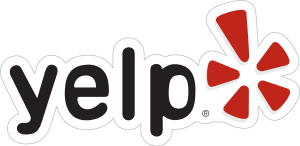Yelp (CDSW)

In this project, we will explore a few ways to gather data using the Yelp API. Once we've done that, we will extend the example code to create our own dataset of tweets.
Goals
- Get set up to build datasets with the Yelp API
- Have fun collecting different types of data from Yelp using a variety of ways to search
- Practice reading and extending other people's code
- Create a few collections of Yelp data to use in your projects
Prerequisite
To participate in the Yelp afternoon session, you must have registered with Yelp as a developer before the session by following the Yelp authentication setup instructions. If you did not do this, or if you tried but did not succeed, please attend one of the other two sessions instead.
Download and test the Yelp project
If you are confused by these steps, go back and refresh your memory with the Day 0 setup instructions
(Estimated time: 10 minutes)
Download the Yelp API project
- Right click the following file, click "Save Target as..." or "Save link as...", and save it to your Desktop directory: http://mako.cc/teaching/2015/cdsw-autumn/yelp-api-cdsw.zip
- The ".zip" extension on the above file indicates that it is a compressed Zip archive. We need to "extract" its contents. To do this on Windows, click on "Start", then "Computer". If you are a Mac, open Finder and navigate to your Desktop directory. Find
yelp-api-cdsw.zipon your Desktop and double-click on it to "unzip" it. That will create a folder calledyelp-api-cdswcontaining several files.
Enter your API information
On Windows
- Start your text editor (probably Notepad++ if you installed it following our instructions last time). Navigate to the directory that contains Yelp API (probably something of the form
C:\Users\YOURUSERNAME\Desktop\yelp-api-cdsw).
On Mac
- Start your text editor (probably TextWrangler if you installed it following our instructions). Navigate to the directory that contains the Yelp API project (probably something of the form
~/Desktop/yelp-api-cdsw).
- Open up the file
yelp_authentication.pyin your text editor. - You will see four lines that include four variables in ALL CAPITALS that are being assigned, in the normal ways we learned about last session, to strings. At the moment, all of the strings say CHANGE_ME.
- Go find the four keys, tokens, and secrets you created and wrote-down when you followed the Yelp authentication setup. Change every string that says CHANGE_ME into a string that includes the key, token, or secret you downloaded. Remember that since these are strings, we need to include quotations marks around them. Also make sure that you match up the right keys and tokens with the right variables.
Once you have done this, your example programs are set up to use the Yelp API!
Test the Yelp API code
On Windows
Start up PowerShell and navigate to the Desktop\yelp-api-cdsw directory where the Yelp API code lives. For example, if the Yelp API project is at C:\Users\YOURUSERNAME\Desktop\yelp-api-cdsw,
cd C:\Users\YOURUSERNAME\Desktop\yelp-api-cdsw
On Mac
Start a command prompt and navigate to the Desktop/yelp-api-cdsw directory where the Yelp API code lives. For example, if the Yelp API project is at ~/Desktop/yelp-api-cdsw,
cd ~/Desktop/yelp-api-cdsw
This will change you into the right directory. ls
will show you the source code files in that directory. One of the files is "yelp1.py", which has a ".py" extension indicating that it is a Python script. Type:
python twitter1.py
at the command prompt to execute the yelp.py Python script. Wait a little while while your computer connects to Yelp. You should see a series of tweets run by your screen. If you don't, let a mentor know.
Potential exercises
Congratulations!!!!
You now know how to capture data from Yelp that you can use in your research!!! Next workshop we'll play with some fun analytical tools.
